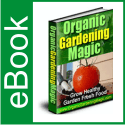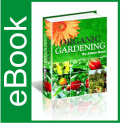How to Create a Cottage Garden
How to Create a Cottage Garden
Article by Sarah Nabila
If there is any characteristic to a cottage garden it is the hazy effect that all the intermingled colors create. The traditional image is one of a garden in which the plants seem to have been planted at random without any thought of planning.
Gaps would be filled as they became available, and self sowing plants would dot themselves around at will. Whether cottage gardens of the past really were this accidental or were just designed to look so, we may never actually know, but these days there is a tendency to exert at least a little control over the design in order to create the most pleasing picture that you can.
How do we get it right when creating a cottage garden? The backdrop to a cottage garden style is important. For example, it will look better against an older house than a modern one. This certainly does not mean that you have to live in a cottage in order to have a cottage garden. It just means that you must modify the situation somehow; for example, perhaps soften a modern house with roses, or create a cottage garden in the rear garden away from the house, dividing it off by using shrubs or trellising covered with climbers.
Although often claimed to be low maintenance, cottage gardens do need a great deal of work. In summer, plenty of deadheading and tidying is required to prevent the garden looking a mess. Tight planting helps to reduce the amount of weeding and staking that is needed, but this can make access difficult when deadheading plants towards the back of the border.
Most cottage gardens had a vegetable garden that had to supply produce for the family all year round. This often ran straight into the flower garden, with flowers and vegetables mixing where they met. Many vegetables have ornamental qualities and can happily be grown among flowers.
A wigwam of runner beans, for example, is wonderful visually. Many vegetable gardens were also arranged in a decorative manner known as the potager. One big disadvantage of growing vegetables among the flowers or in a decorative manner is that gaps are left when you pick the produce.
About the Author
To learn more about the different types of plant nursery supplies for your garden, make sure to visit http://www.plantnurserysupplies.com
Make sure to get your free catalog on gardening while you are there.

 December 20, 2011
December 20, 2011 







